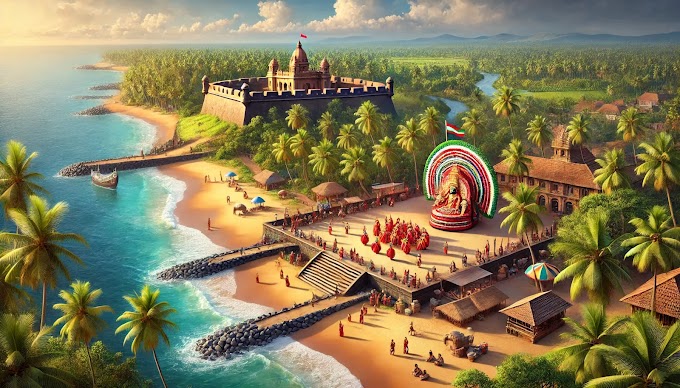 |
| Purana Qila |
Discover the Rich History and Architecture of Purana Qila – Timings, Entry Fees, and Best Time to Visit
Introduction: Purana Qila (Old Fort), located in Delhi, is one of the oldest and most significant historical landmarks in India. Known for its association with Humayun and Sher Shah Suri, Purana Qila offers a glimpse into the ancient heritage of Delhi, standing as a testament to the city's turbulent past. The fort, constructed in the 16th century, features Mughal and Afghan architecture, making it a must-visit for history enthusiasts and tourists alike.
History of Purana Qila:
Purana Qila is steeped in history, with its origins dating back to the reign of Humayun, the Mughal emperor. However, its significance extends even further to the Mahabharata, with some historians suggesting that the fort was built on the site of Indraprastha, the capital of the Pandavas from the ancient epic. Humayun began the construction of Purana Qila in 1533, but after he was defeated by Sher Shah Suri, the fort was completed by Sher Shah in 1545.
The fort played a crucial role during the Mughal period, and in the later stages of Indian history, it became a stronghold for the British during the First War of Independence in 1857. Despite facing numerous battles and reconstructions, Purana Qila still retains its original grandeur.
Architectural Significance:
Purana Qila is an impressive example of Mughal military architecture with distinct Afghan influences. The fort's walls stretch for 1.5 kilometers and stand 18 meters high, showcasing the strength of its defensive structure. The fort has three grand gateways: the Humayun Gate, Bada Darwaza, and Talaqi Gate. Each gate is adorned with intricate carvings, and they stand as prominent examples of Mughal craftsmanship.
Inside the fort, you'll find various monuments, including:
Qila-i-Kuhna Mosque: A stunning example of early Mughal architecture, built by Sher Shah Suri. The mosque is known for its detailed stone carvings and intricate designs in red sandstone and marble.
Sher Mandal: A two-story octagonal tower, originally built by Sher Shah Suri, which was later used by Humayun as his library.
Must-See Attractions at Purana Qila:
Qila-i-Kuhna Mosque: An architectural marvel within the fort, with its ornate walls and domes.
Sher Mandal: Historically significant as the spot where Emperor Humayun reportedly fell to his death.
Museum: Located within the fort, this museum displays artifacts dating back to the Mauryan, Gupta, and Mughal periods.
Best Time to Visit Purana Qila:
The best time to visit Purana Qila is during the winter months, from October to March when the weather in Delhi is cooler and more suitable for outdoor exploration. Visiting in the early morning or late afternoon ensures a more pleasant experience without the crowds.
Visiting Timings and Entry Fees:
Timings: Purana Qila is open daily from 7:00 AM to 5:00 PM.
Entry Fee: ₹30 for Indian citizens, ₹300 for foreign tourists. Entry for children under 15 is free.
How to Reach Purana Qila:
Nearest Metro Station: Pragati Maidan Metro Station on the Blue Line is the closest metro station.
By Road: The fort is easily accessible by taxis, auto-rickshaws, and buses.
Nearby Attractions:
India Gate: A popular war memorial located a short distance from Purana Qila.
National Zoological Park: Situated nearby, it's a great spot for families and nature lovers.
Humayun’s Tomb: Another prominent Mughal monument located close to Purana Qila, known for its stunning architecture and historical importance.
Conclusion:
A visit to Purana Qila offers an enriching journey into Delhi’s ancient and medieval history. From its towering walls to its historical structures like the Qila-i-Kuhna Mosque and Sher Mandal, Purana Qila transports visitors back to the grandeur of the Mughal Empire. Whether you are a history enthusiast or simply looking for a peaceful spot in the city, Purana Qila is a must-visit destination in Delhi. Plan your visit to experience the ancient charm and architectural brilliance of this historic fort.
Read more about popular tourist places in India






